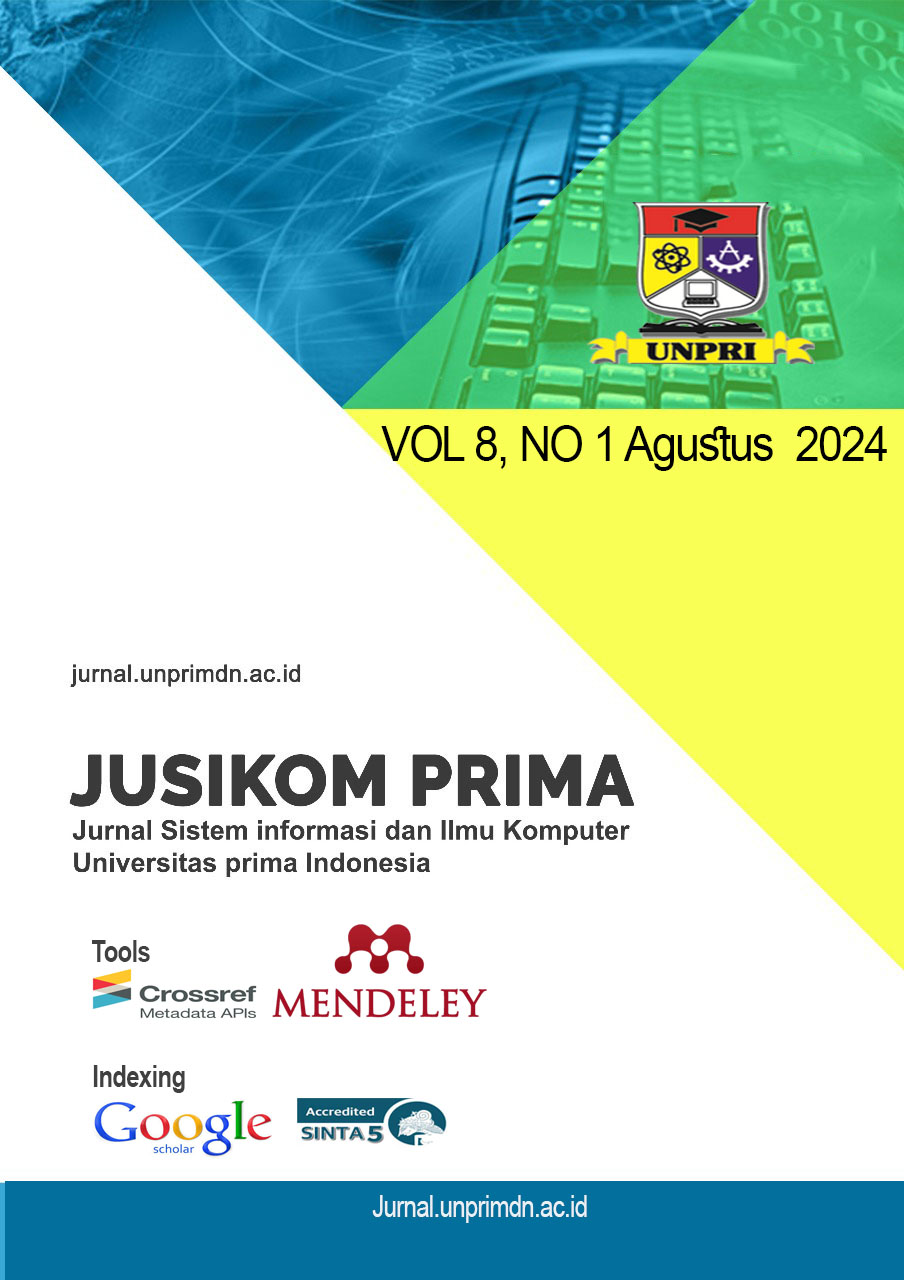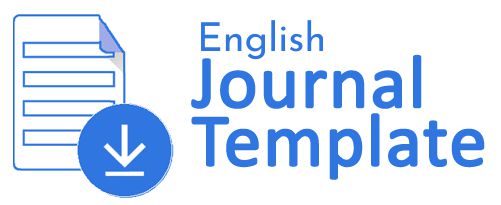Analysis and Design of Web-Based MSME Cashier Application Using the Waterfall Model
Abstract
The rapid advancement of information technology in Indonesia has provided numerous benefits such as increased work efficiency, expanded access to information, and enhanced connectivity. Additionally, technology has opened up new opportunities for business and job creation. However, on the other hand, there are several challenges that need to be addressed, such as digital divide, cybercrime, and social impacts that require management. Manual transaction systems have several drawbacks, particularly during high order volumes, resulting in inefficient recording and difficulty in tracking top-selling products. This is due to the limitations of manual sales transaction recording. Therefore, the use of a cashier application is necessary to streamline all transaction processes, including sales, payments, purchases, payroll, and inventory management. Point of Sale (POS) is a software and hardware solution specifically designed to facilitate these transactions. Despite the availability of many POS applications in the current market, they often do not meet the specific needs of SMEs and are relatively expensive, leading many SME operators to hesitate in adopting them. Based on observations and interviews with SME operators, there is a need for POS applications that not only cater to the specific requirements of SMEs but are also financially feasible.
References
Yana Siregar, L., Irwan Padli Nasution Prodi Manajemen, M., & Negeri Islam Sumatera Utara, U. (2020). HIRARKI Jurnal Ilmiah Manajemen dan Bisnis DEVELOPMENT OF INFORMATION TECHNOLOGY ON INCREASING BUSINESS ONLINE. 2(1), 71–75. https://doi.org/10.30606/hjimb
Primasari, C. H., & Wibisono, Y. P. (2022). Implementasi dan pelatihan penggunaan point of sales pada UMKM Kotabaru Yogyakarta. Masyarakat Berdaya Dan Inovasi, 3(2), 103–108. https://doi.org/10.33292/mayadani.v3i2.87
Ramsari, N., & Ginanjar, A. (2022). Implementasi Infrastruktur Server Berbasis Cloud Computing Untuk Web Service Berbasis Teknologi Google Cloud Platform. Conference SENATIK STT Adisutjipto Yogyakarta, 7. https://doi.org/10.28989/senatik.v7i0.472
Anis, Y., Mukti, A. B., & Rosyid, A. N. (2023). KLIK: Kajian Ilmiah Informatika dan Komputer Penerapan Model Waterfall Dalam Pengembangan Sistem Informasi Aset Destinasi Wisata Berbasis Website. Media Online), 4(2), 1134–1142. https://doi.org/10.30865/klik.v4i2.1287b
M. Abbas, M. Beggas, dan A. Boucherit, “Formalizing and Verifying UML Activity Diagrams,” Communications in Computer and Information Science, vol. 1085, hlm. 49–63, 2019, doi: 10.1007/978-3-030-32213-7_4
Nuku, E. Masihor, and R. Pasaribu, “Penerapan Metode RAD dalam Perancangan Sistem Informasi Aplikasi Penelusuran Putusan (SIAPP),” Jointer - J. Informatics Eng., vol. 1, no. 02, 2020, doi: 10.53682/jointer. V 1i02.19.
N. Hasibuan and T. Dirgahayu, “Pengujian dengan Unit Testing dan Test case pada Proyek Pengembangan Modul Manajemen Pengguna,” J. Inform. Univ.Islam Indones.,vol. 2, no. 1, 2020.
Rohmat Baktiar, D. Mulainsyah, E. Candra Sasmoro, and E. Effendy, “Pengujian Menggunakan Black Box Testing dengan Teknik State Transition Testing Pada Perpustakaan Yayasan Pendidikan Islam Pakualam Berbasis Web,” J. Kreat. Mhs. Inform., vol. 2, 2021.
Rajesha Dwi Vanderma, D. M. (2023). APLIKASI PENJADWALAN ANTAR JEMPUT LAUNDRY BERBASIS WEB PADA SAVA LAUNDRY. 1(26), 34–47
Mubarak, A. (2019). Rancang Bangun Aplikasi Web Sekolah Menggunakan Uml (Unified Modeling Language) Dan Bahasa Pemrograman Php (Php Hypertext Preprocessor) Berorientasi Objek. JIKO (Jurnal Informatika Dan Komputer), 2(1), 19–25. https://doi.org/10.33387/jiko.v2i1.1052
M. Stauffer, Laravel: Up & Running. “ O’Reilly Media, Inc.,” 2023.
Cravero, A. Bustamante, M. Negrier, dan P. Galeas, “Agricultural Big Data Architectures in the Context of Climate Change: A Systematic Literature Review,” Sustainability, vol. 14, no. 13, hlm. 7855, Jun 2022, doi: 10.3390/su14137855.
Yusa Rahman, F. (2021). PENERAPAN METODE WATERFALL PADA APLIKASI LAUNDRY BERBASIS WEB. In Technologia (Vol. 12, Issue 2).
Mokoginta, D., Amerlien Sandra Wowiling, S., Subhan Iswahyudi, M., Suparman, A., & Veza, O. (2024). Perancangan Sistem Informasi Penggajian 16
Berbasis Web Dengan Metode Waterfall. 4(1). https://doi.org/10.47709/digitech.v4i1.3787
Rifanda|, A. Y., Rifanda, A. Y., Prasetyo Nugroho, C., Nurfauziah, E., Lestari, R. A., & Saifudin, A. (2023). (media online) Hal 165-172 Pengembangan Aplikasi Inventori Barang Dengan Metode Waterfall. JURIHUM : Jurnal Inovasi Dan Humaniora, 1(1). https://jurnalmahasiswa.com/index.php/jurihum|
Majid, A. W., Istiqomah, D. A., Wiratama, B. B., Guji S. U., F. J., Wahyuni, S. N., & Windarni, V. A. (2024). PEMBUATAN APLIKASI LAPORAN KINERJA ONLINE (LAKON) BERBASIS ANDROID MENGGUNAKAN METODE WATERFALL. Information System Journal, 7(01), 1–10. https://doi.org/10.24076/infosjournal.2024v7i01.1528
Juventauricula, P., Hanggara, B. T., & Pramono, D. (2024). Pengembangan Sistem Informasi Point of Sale (POS) berbasis Web menggunakan Pendekatan Metode Waterfall (Studi Kasus: Restoran Altari) (Vol. 8, Issue 1). http://j-ptiik.ub.ac.id
Subianto, T. A. D. P., Wiratama, J., & Halim, F. A. (2023). The Development of web-based Cashier and Inventory Information Systems using Prototyping Model on Micro, Small, and Medium Enterprise (MSMEs) in Indonesia. JOINS (Journal Inf. Syst, 8(1), 80-89.
Downloads
Published
How to Cite
Issue
Section
License
Copyright (c) 2024 Muhammad irlansyah Putra, Kevin Ronitua Silalahi, Paskaria Sinabutar, Okta Jaya Harmaja

This work is licensed under a Creative Commons Attribution-ShareAlike 4.0 International License.
Authors who publish their manuscripts through the Journal of Information Systems and Computer Science agree to the following:
- Copyright to the manuscripts of scientific papers in this Journal is held by the author.
- The author surrenders the rights when first publishing the manuscript of his scientific work and simultaneously the author grants permission / license by referring to the Creative Commons Attribution-ShareAlike 4.0 International License to other parties to distribute his scientific work while still giving credit to the author and the Journal of Information Systems and Computer Science as the first publication medium for the work.
- Matters relating to the non-exclusivity of the distribution of the Journal that publishes the author's scientific work can be agreed separately (for example: requests to place the work in the library of an institution or publish it as a book) with the author as one of the parties to the agreement and with credit to sJournal of Information Systems and Computer Science as the first publication medium for the work in question.
- Authors can and are expected to publish their work online (e.g. in a Repository or on their Organization's/Institution's website) before and during the manuscript submission process, as such efforts can increase citation exchange earlier and with a wider scope.














